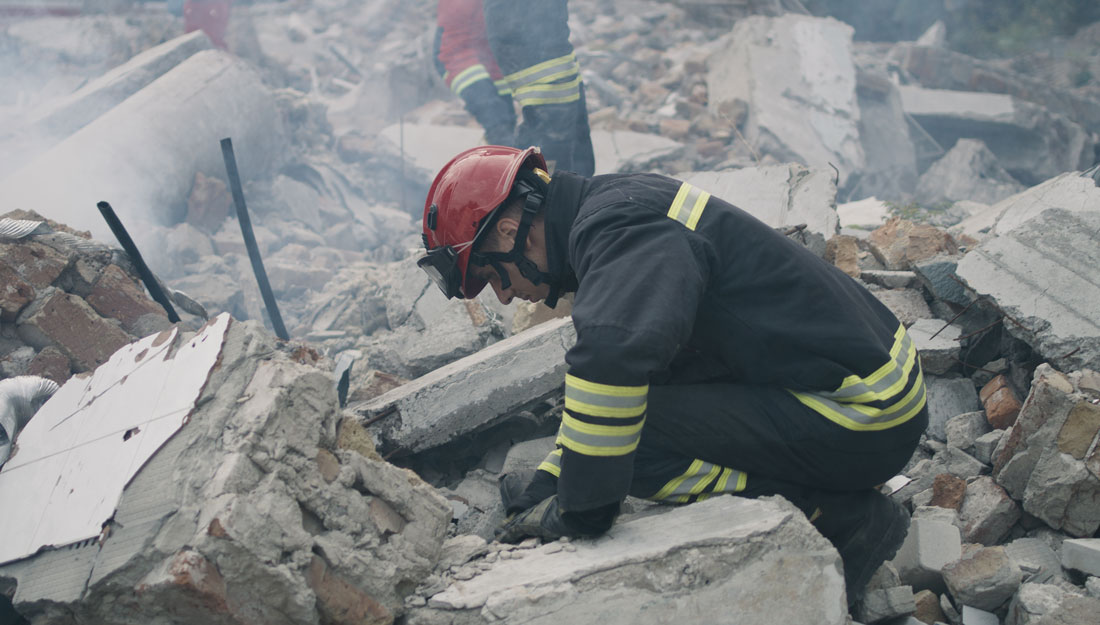- Rae Lynn Mitchell
- Public Health, Research, Show on VR homepage
Combating fear of falling in older adults
Study on Matter of Balance fall-prevention program shows great benefits for older adults

For older adults, falls can be a serious occurrence. Roughly a quarter of American adults over the age of 65 fall in a given year, and about 20 percent of those falls result in serious injury or death.
One of the many factors affecting risks of falling and fall-related injuries is fear of falling. This is driven largely by a person’s fall-related efficacy, which is their level of confidence in standing or walking without falling. Several public health interventions have taken aim at reducing fear of falling, as improving fall-related efficacy can reduce risks of falling and improve physical activity in older adults. One such intervention, A Matter of Balance Volunteer Lay Leader (AMOB/VLL) model, has been in use for more than 20 years; however, synthesized analyses on the AMOB/VLL’s effectiveness are limited.
A new study published in the journal Archives of Gerontology and Geriatrics works to address this knowledge gap to measure how effective the AMOB/VLL is. In this study, lead author Aya Yoshikawa, PhD, and co-authors Gilbert Ramirez, DrPH, Matthew Lee Smith, PhD, Shinduk Lee, PhD, and Marcia Ory, PhD, of the Texas A&M Health Center for Population Health and Aging and Texas A&M University School of Public Health, analyzed the existing literature on the AMOB/VLL to determine its effect on fear of falling and fall-related efficacy. Their study aimed to summarize the effects of AMOB/VLL, identify the strength and variability of those effects and the characteristics of individual studies.
Fear of falling raises the risk of falls and fall-related injury, but it also affects the quality of life in older adults, making them less likely to be physically active or socially engaged. Introduced in 1998, AMOB/VLL attempts to decrease fear of falling and increase fall-related efficacy using a primarily cognitive-based approach. The intervention consists of eight two-hour sessions led by volunteer lay leaders who complete a two-day standardized training, and works to help participants recognize and change distorted beliefs related to fear of falling. The program also features group activities and practical advice for participants and includes exercise sessions aimed at improving strength and balance.
Yoshikawa and colleagues searched several electronic databases to find research articles and doctoral dissertations that evaluated AMOB/VLL’s effectiveness at reducing fear of falling and improving fall-related efficacy. They collected data on the study and sample characteristics as well as study outcomes and study designs. They then analyzed the findings of 13 papers to determine the intervention’s effectiveness. Although there were variations in sample size and study design, the analysis found that AMOB/VLL developed based on cognitive-behavioral therapy, may be as effective as exercise-based interventions on reducing fear of falling and improving fall-related efficacy.
The findings of this study point to this intervention’s effectiveness; however, the researchers note that further research is warranted. Additional research using a larger sample and that performs in-depth analyses of different subgroups will likely clarify the intervention’s effectiveness. This could help confirm the findings of this study and provide better tools for making informed decisions about which fall prevention programs to use. The findings of this study also highlight the need for standardized outcome measures, which are useful for measuring the effectiveness of the AMOB/VLL and other interventions. Additionally, more study is needed to determine the intervention’s longer-term effectiveness.
Despite the limited number of studies, this work shows the effectiveness of AMOB/VLL and the importance of interventions aimed at reducing fear of falling and improving fall-related efficacy. This study’s findings help provide a better understanding of how fall-prevention programs benefit older adults. By reducing fear of falling and improving fall-related efficacy, such interventions can reduce injury risks, decrease health care costs and improve quality of life for the large and growing population of older adults.
Media contact: media@tamu.edu


